Table of Contents
Preface
Obtaining the Example Programs
How to Contact Us
Conventions Used in This Book
Using Code Examples
Safari® Books Online
Acknowledgments
Part I. Generics
Chapter 1. Introduction
1.1 Generics
1.2 Boxing and Unboxing
1.3 Foreach
1.4 Generic Methods and Varargs
1.5 Assertions
Chapter 2. Subtyping and Wildcards
2.1 Subtyping and the Substitution Principle
2.2 Wildcards with extends
2.3 Wildcards with super
2.4 The Get and Put Principle
2.5 Arrays
2.6 Wildcards Versus Type Parameters
2.7 Wildcard Capture
2.8 Restrictions on Wildcards
Chapter 3. Comparison and Bounds
3.1 Comparable
3.2 Maximum of a Collection
3.3 A Fruity Example
3.4 Comparator
3.5 Enumerated Types
3.6 Multiple Bounds
3.7 Bridges
3.8 Covariant Overriding
Chapter 4. Declarations
4.1 Constructors
4.2 Static Members
4.3 Nested Classes
4.4 How Erasure Works
Chapter 5. Evolution, Not Revolution
5.1 Legacy Library with Legacy Client
5.2 Generic Library with Generic Client
5.3 Generic Library with Legacy Client
5.4 Legacy Library with Generic Client
5.4.1. Evolving a Library using Minimal Changes
5.4.2. Evolving a Library using Stubs
5.4.3. Evolving a Library using Wrappers
5.5 Conclusions
Chapter 6. Reification
6.1 Reifiable Types
6.2 Instance Tests and Casts
6.3 Exception Handling
6.4 Array Creation
6.5 The Principle of Truth in Advertising
6.6 The Principle of Indecent Exposure
6.7 How to Define ArrayList
6.8 Array Creation and Varargs
6.9 Arrays as a Deprecated Type?
6.10 Summing Up
Chapter 7. Reflection
7.1 Generics for Reflection
7.2 Reflected Types are Reifiable Types
7.3 Reflection for Primitive Types
7.4 A Generic Reflection Library
7.5 Reflection for Generics
7.6 Reflecting Generic Types
Chapter 8. Effective Generics
8.1 Take Care when Calling Legacy Code
8.2 Use Checked Collections to Enforce Security
8.3 Specialize to Create Reifiable Types
8.4 Maintain Binary Compatibility
Chapter 9. Design Patterns
9.1 Visitor
9.2 Interpreter
9.3 Function
9.4 Strategy
9.5 Subject-Observer
Part II. Collections
Chapter 10. The Main Interfaces of the Java Collections Framework
Chapter 11. Preliminaries
11.1 Iterable and Iterators
11.2 Implementations
11.3 Efficiency and the O-Notation
11.4 Contracts
11.5 Collections and Thread Safety
11.5.1. Synchronization and the Legacy Collections
11.5.2. JDK 1.2: Synchronized Collections and Fail-Fast Iterators
11.5.3. Concurrent Collections: Java 5 and Beyond
Chapter 12. The Collection Interface
12.1 Using the Methods of Collection
12.2 Implementing Collection
12.3 Collection Constructors
Chapter 13. Sets
13.1 Implementing Set
13.1.1. HashSet
13.1.2. LinkedHashSet
13.1.3. CopyOnWriteArraySet
13.1.4. EnumSet
13.2 SortedSet and NavigableSet
13.2.1. NavigableSet
13.2.2. TreeSet
13.2.3. ConcurrentSkipListSet
13.3 Comparing Set Implementations
Chapter 14. Queues
14.1 Using the Methods of Queue
14.2 Implementing Queue
14.2.1. PriorityQueue
14.2.2. ConcurrentLinkedQueue
14.3 BlockingQueue
14.3.1. Using the Methods of BlockingQueue
14.3.2. Implementing BlockingQueue
LinkedBlockingQueue
ArrayBlockingQueue
PriorityBlockingQueue
DelayQueue
SynchronousQueue
14.4 Deque
14.4.1. Implementing Deque
ArrayDeque
LinkedList
14.4.2. BlockingDeque
Implementing BlockingDeque
14.5 Comparing Queue Implementations
Chapter 15. Lists
15.1 Using the Methods of List
15.2 Implementing List
15.2.1. ArrayList
15.2.2. LinkedList
15.2.3. CopyOnWriteArrayList
15.3 Comparing List Implementations
Chapter 16. Maps
16.1 Using the Methods of Map
16.2 Implementing Map
16.2.1. HashMap
16.2.2. LinkedHashMap
16.2.3. WeakHashMap
16.2.4. IdentityHashMap
16.2.5. EnumMap
16.3 SortedMap and NavigableMap
16.3.1. NavigableMap
16.3.2. TreeMap
16.4 ConcurrentMap
16.4.1. ConcurrentHashMap
16.5 ConcurrentNavigableMap
16.5.1. ConcurrentSkipListMap
16.6 Comparing Map Implementations
Chapter 17. The Collections Class
17.1 Generic Algorithms
17.1.1. Changing the Order of List Elements
17.1.2. Changing the Contents of a List
17.1.3. Finding Extreme Values in a Collection
17.1.4. Finding Specific Values in a List
17.2 Collection Factories
17.3 Wrappers
17.3.1. Synchronized Collections
17.3.2. Unmodifiable Collections
17.3.3. Checked Collections
17.4 Other Methods
Index
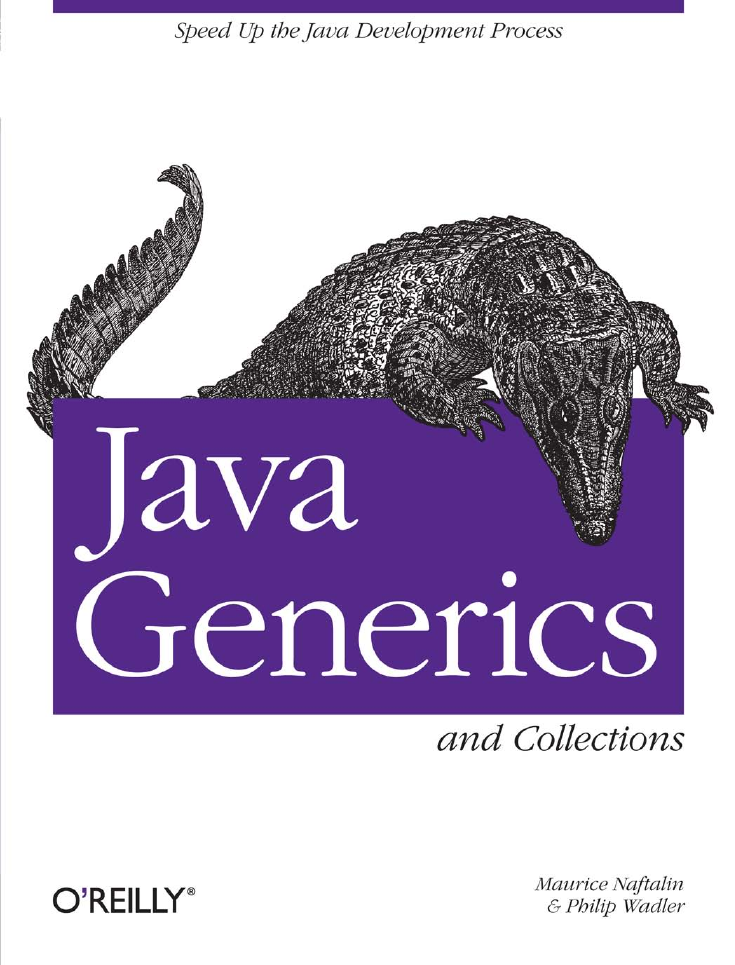
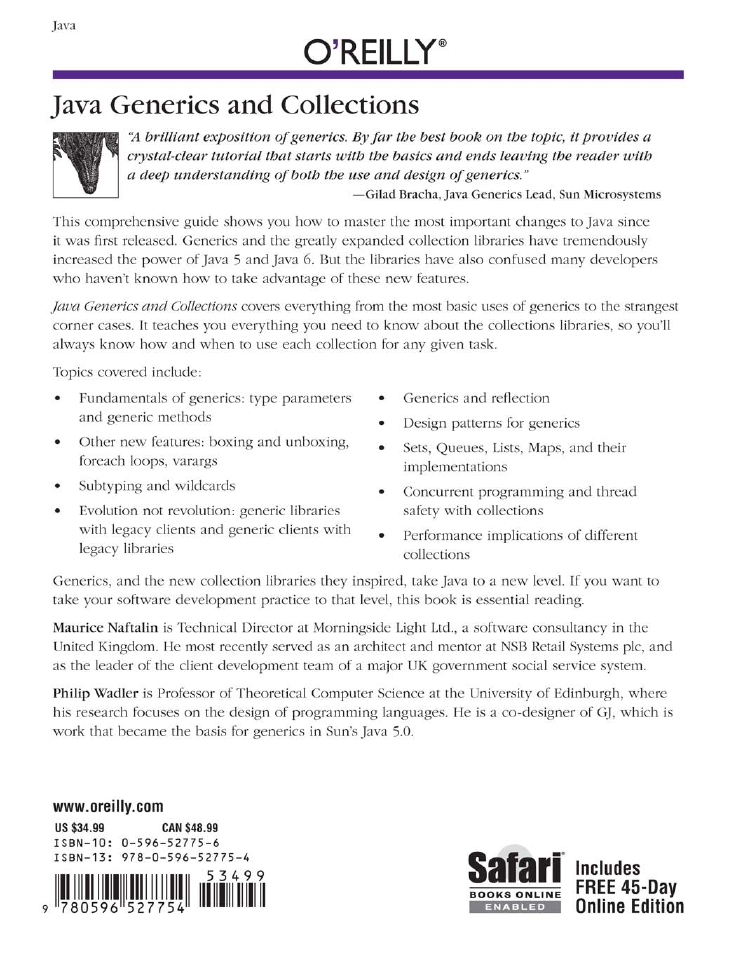
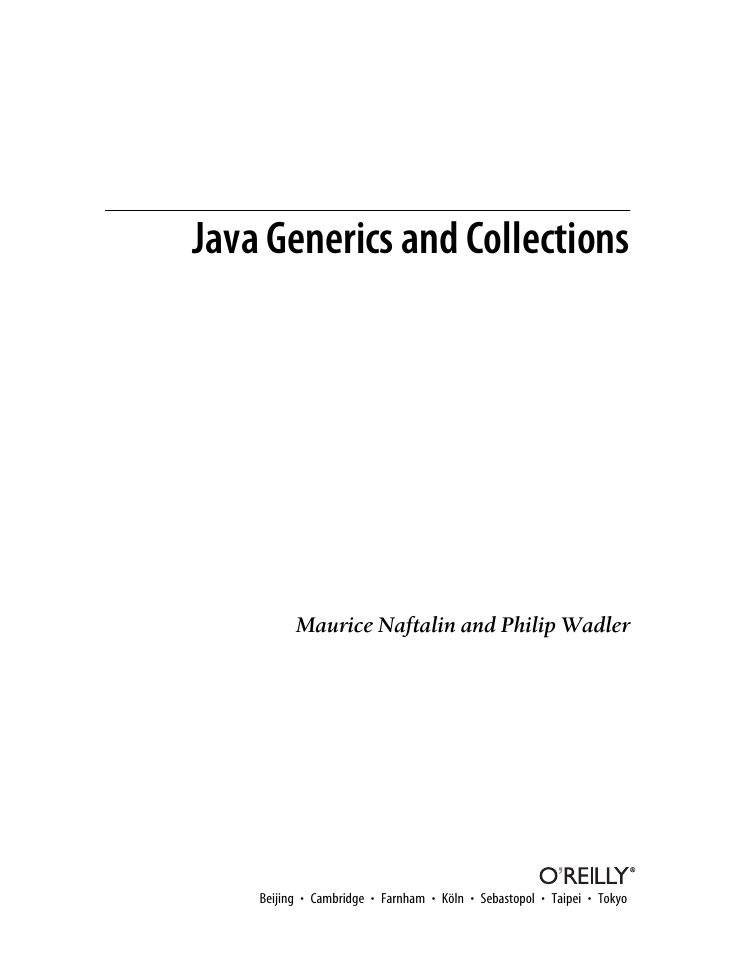



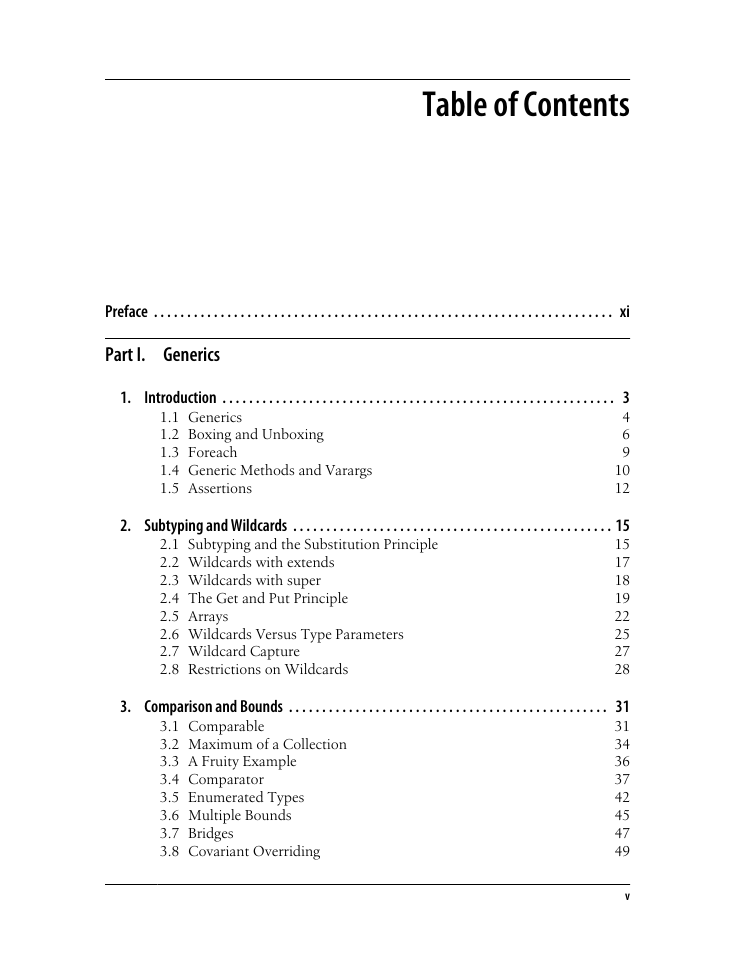
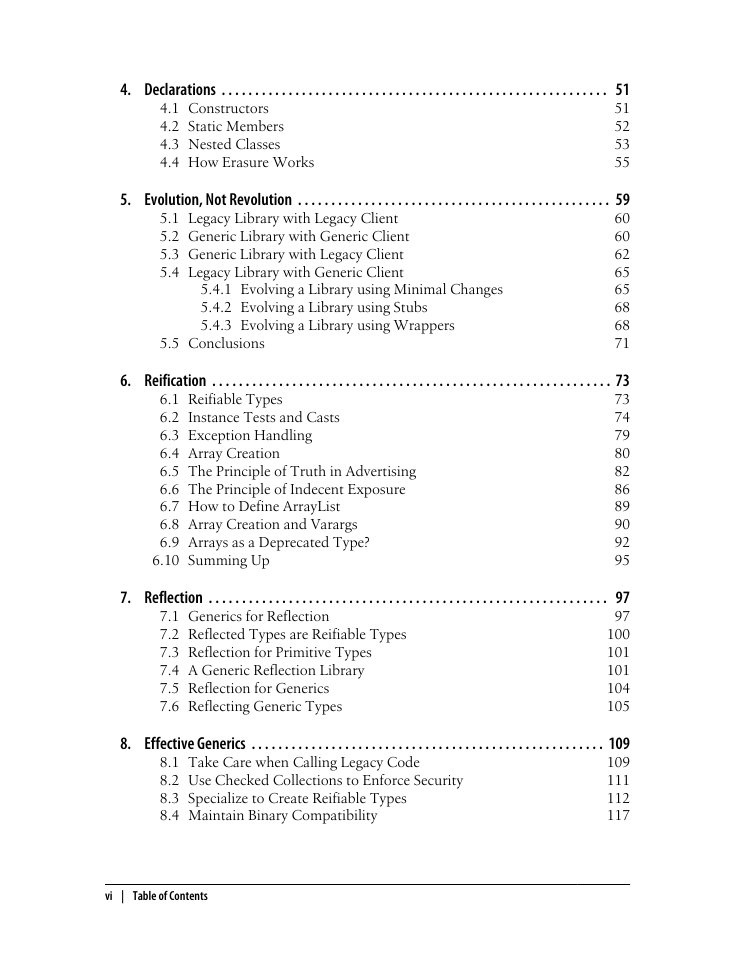








 2023年江西萍乡中考道德与法治真题及答案.doc
2023年江西萍乡中考道德与法治真题及答案.doc 2012年重庆南川中考生物真题及答案.doc
2012年重庆南川中考生物真题及答案.doc 2013年江西师范大学地理学综合及文艺理论基础考研真题.doc
2013年江西师范大学地理学综合及文艺理论基础考研真题.doc 2020年四川甘孜小升初语文真题及答案I卷.doc
2020年四川甘孜小升初语文真题及答案I卷.doc 2020年注册岩土工程师专业基础考试真题及答案.doc
2020年注册岩土工程师专业基础考试真题及答案.doc 2023-2024学年福建省厦门市九年级上学期数学月考试题及答案.doc
2023-2024学年福建省厦门市九年级上学期数学月考试题及答案.doc 2021-2022学年辽宁省沈阳市大东区九年级上学期语文期末试题及答案.doc
2021-2022学年辽宁省沈阳市大东区九年级上学期语文期末试题及答案.doc 2022-2023学年北京东城区初三第一学期物理期末试卷及答案.doc
2022-2023学年北京东城区初三第一学期物理期末试卷及答案.doc 2018上半年江西教师资格初中地理学科知识与教学能力真题及答案.doc
2018上半年江西教师资格初中地理学科知识与教学能力真题及答案.doc 2012年河北国家公务员申论考试真题及答案-省级.doc
2012年河北国家公务员申论考试真题及答案-省级.doc 2020-2021学年江苏省扬州市江都区邵樊片九年级上学期数学第一次质量检测试题及答案.doc
2020-2021学年江苏省扬州市江都区邵樊片九年级上学期数学第一次质量检测试题及答案.doc 2022下半年黑龙江教师资格证中学综合素质真题及答案.doc
2022下半年黑龙江教师资格证中学综合素质真题及答案.doc